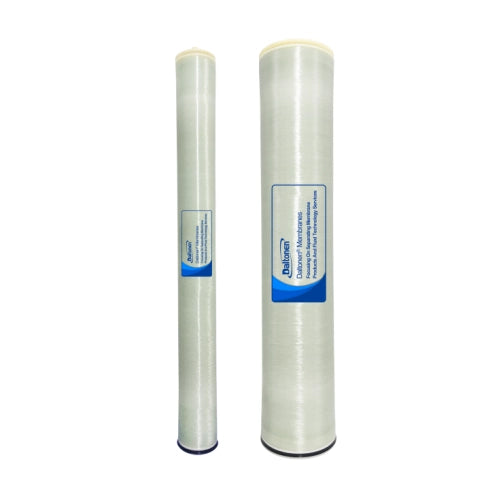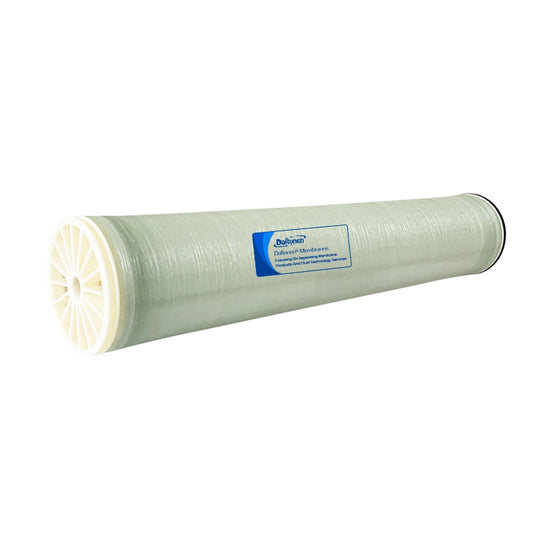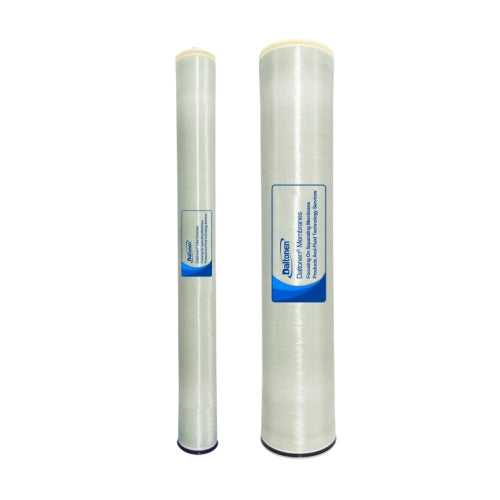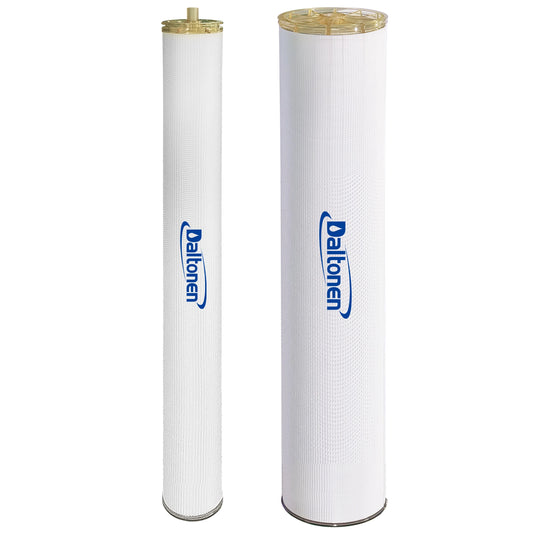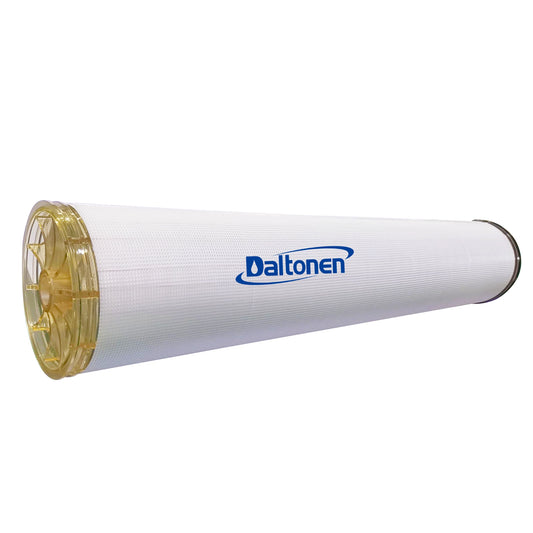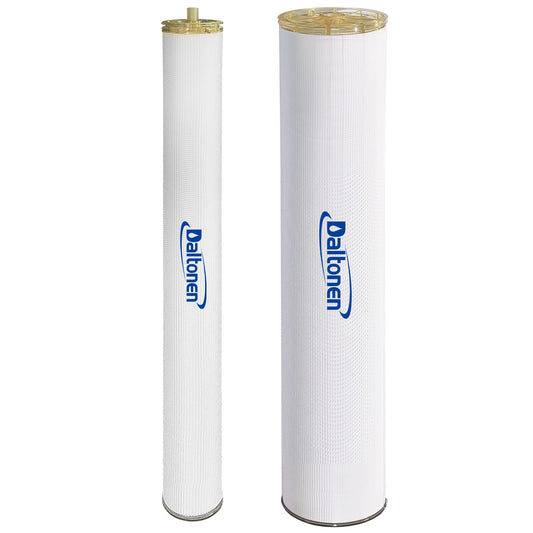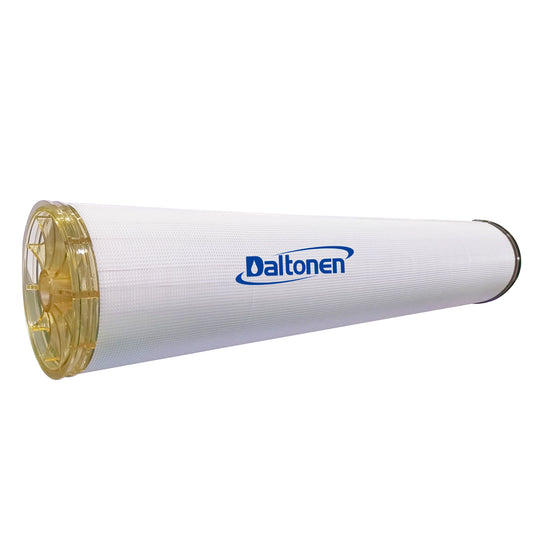Design and Scheme of Natural Soda Water Nanofiltration Concentration Process
03 Jun 2025
Natural soda water is rich in minerals and trace elements such as bicarbonates, calcium, magnesium, and strontium. Its concentration requires the removal of large-molecule impurities or adjustment of ion ratios while retaining natural mineral components. Nanofiltration (NF) membrane technology, with its selective separation characteristics, can precisely achieve this goal. The following is the process design and scheme:
I. Process Design
-
Pre-treatment Stage: Water Quality Stabilization and Impurity Removal
-
Coarse Filtration: Raw water passes through a 5-10μm security filter to remove suspended particles, silt, and other impurities, protecting the subsequent membrane system.
-
Precision Filtration: A 1μm microfiltration membrane (such as a polypropylene pleated filter element) further retains colloids and microorganisms (such as algae).
-
pH Adjustment (Optional): If the raw water pH fluctuates significantly (e.g., 6.5-8.5), food-grade CO₂ or sodium bicarbonate is added to adjust it to 7.0-7.5 to prevent scaling on the NF membrane.

-
Nanofiltration Membrane Concentration Stage
-
Membrane Module Selection: Selective NF membrane: A negatively charged membrane with a retention molecular weight of 200-300 Da (such as DuPont™ NF270-400) is selected, with a retention rate of ≥90% for divalent ions (Ca²⁺, Mg²⁺, SO₄²⁻) and a retention rate of 30-50% for monovalent ions (Na⁺, HCO₃⁻), preserving the characteristic low-sodium, high-bicarbonate nature of natural soda water.
-
Operating Parameters: Pressure: 0.8-1.5 MPa (adjusted according to the raw water TDS; when TDS is 500-2000mg/L, the pressure is ≤1.2MPa). Temperature: 10-25℃ (to avoid CO₂ escape and membrane performance degradation due to high temperatures). Recovery rate: 60-70% for a single stage, up to 85% for multi-stage series (the mineral concentration in the concentrate is increased by 2-3 times).
-
Retention Mechanism: Ion selectivity: The membrane surface charge (negative) repels multivalent anions such as sulfate, allowing partial HCO₃⁻ to pass through and maintain the taste of natural soda water. Molecular sieving: Retains large-molecule organic matter (such as humic acid) and microbial metabolites, enhancing water quality safety.
-
Post-treatment and Finished Product
-
Degassing Treatment: The membrane product water passes through a vacuum degassing tower to remove free CO₂, adjusting the carbonic acid balance to prevent bloating after filling.
-
Mineralization Balance (Optional): For the concentrate, food-grade bicarbonates (such as NaHCO₃) or strontium elements are added to adjust the mineral ratio to the standard of natural soda water.
-
Sterilization and Filling: Ultraviolet (UV) or ozone (0.1-0.3mg/L) sterilization is used, and aseptic cold filling technology is employed for packaging.
-
Concentrate Reuse: NF concentrate (containing high concentrations of Ca²⁺ and Mg²⁺) can be used to prepare mineral supplements or as a source of water for recharge.
II. Core Equipment Configuration
Module
Equipment and Parameters
Pre-treatment Unit
Security filter (10μm), microfiltration system (1μm PP membrane), pH adjustment tank (food-grade material)
Nanofiltration System
Anti-fouling NF membrane (NF270-400), variable frequency high-pressure pump (1.5MPa), automatic backpressure valve
Post-treatment Unit
Vacuum degassing tower (-0.08MPa), mineralization reaction tank (with agitation), UV/O₃ combined sterilization system
Monitoring System
Online TDS meter, pH sensor, ion chromatography (monitoring Ca²⁺, Mg²⁺, HCO₃⁻), rapid microbial detector
III. Expected Results and Advantages
Index
Raw Water
NF Product Water
Concentrate
TDS (mg/L)
800-1500
300-600
2000-3500
Ca²⁺ (mg/L)
50-100
≤10 (retention rate ≥90%)
150-300
HCO₃⁻ (mg/L)
400-800
200-400 (retention rate 50%)
600-1200
Microorganisms (CFU/mL)
≤100
≤1 (after UV/O₃ sterilization)
Technical Advantages:
Mineral retention: Selective retention of divalent ions maintains the low-sodium, high-HCO₃⁻ characteristics of natural soda water.
Taste optimization: Removal of humic acid and other off-flavor substances enhances clarity and mellow taste.
Zero chemical addition: Physical separation process, no need to add flocculants or preservatives, in line with natural beverage standards.
High energy efficiency ratio: Energy consumption ≤1.5kW·h/m³, more than 40% energy-saving compared to reverse osmosis (RO).

IV. Operation and Management Key Points
Scale Control:
When the raw water hardness (calculated as CaCO₃) > 200mg/L, 0.1-0.5ppm food-grade scale inhibitor (such as polyaspartic acid) is added.
Every 12 hours, a 2-minute low-pressure flushing (0.3MPa) is performed to reduce the risk of membrane surface scaling.
Membrane Cleaning and Maintenance:
Organic fouling: Every month, a 0.1% NaOH + 0.05% EDTA solution is circulated for 30 minutes to clean.
Inorganic scaling: Every quarter, a 1% citric acid solution is used for cleaning to restore membrane flux to ≥95%.
Hygiene Control:
The filling workshop cleanliness reaches 100,000 grade, ozone water is circulated to rinse the pipeline system, and microbial indicators are tested weekly.
V. Economic Benefit Analysis
Investment Cost:
For a 10-ton/hour production system, the equipment investment is approximately ¥2-3 million (including pre-treatment, nanofiltration, sterilization, and filling).
Operating Cost:
Energy consumption: ¥0.8-1.2/m³; Membrane replacement: ¥0.3-0.5/m³; Total cost ≤ ¥2.0/m³.
Revenue:
The value of the concentrate is increased (e.g., high-end customized soda water), and the selling price can reach 3-5 times that of raw water;
Resource utilization of concentrate (e.g., mineral additives) creates additional revenue of ¥50-100/ton.
VI. Application Cases
Changbai Mountain Natural Soda Water:
The raw water contains HCO₃⁻ 650mg/L and Ca²⁺ 80mg/L. After NF concentration, the product water has HCO₃⁻ 350mg/L (low-sodium type), and the concentrate has HCO₃⁻ 950mg/L (high-alkaline type), with a market premium of 30%.
Evian-Style Customization:
The Ca²⁺/Mg²⁺ ratio is adjusted to 4:1 through NF to simulate a specific mineral taste, entering the high-end custom water market.
Tags:
